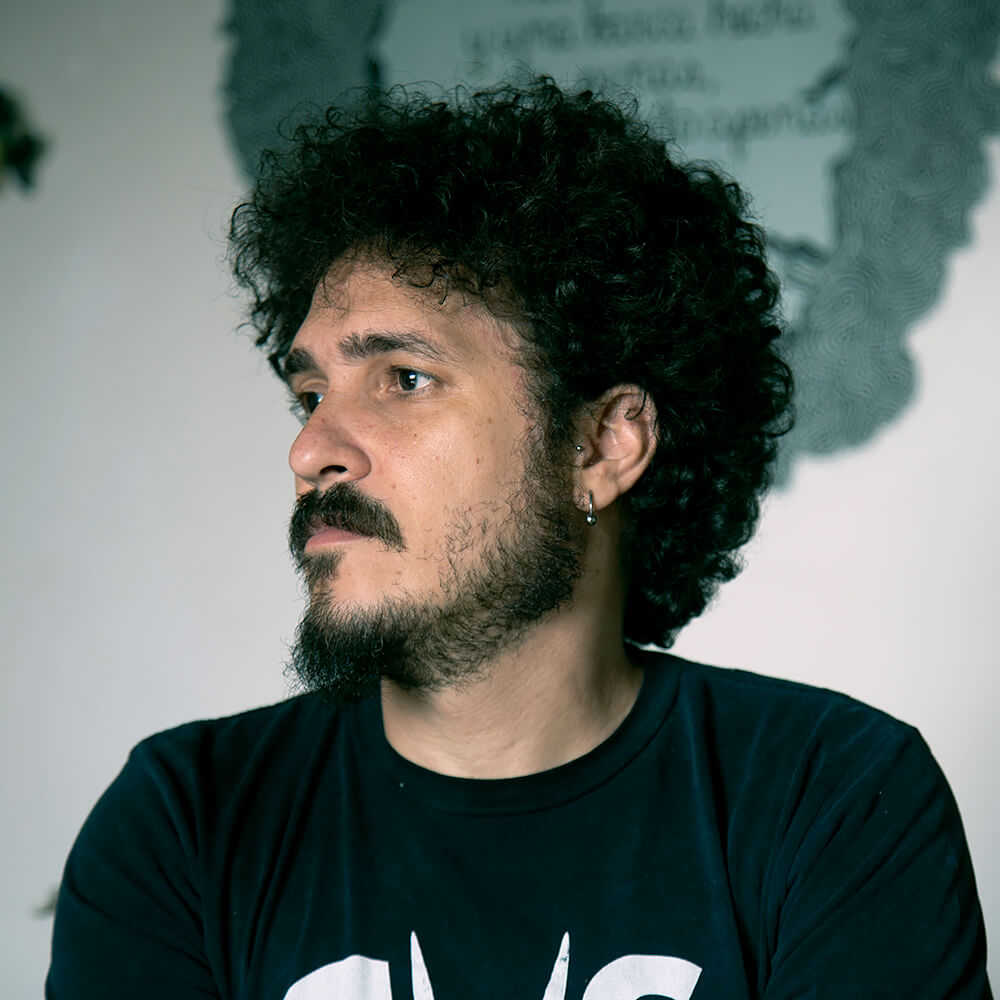He studied at the Cátedra Arte de Conducta created and directed by Tania Bruguera. He has exhibited in several solo exhibitions in countries like Italy and Cuba. Among his group exhibitions those carrier as 3th edition International Collage Art. Retroavangarda Gallery. Warsaw; Relatos contemporáneos. PHotoEspaña 2020. Casa América; Social Subjetiva. PHotoEspaña 2019. Ateneo de Madrid; Identity, hibridism, diference. FestFoto Brazil 2019. Fundação Ibere Camargo in Porto Alegre; HOPE. ESMoA El Segundo Museum of Art in Los Angeles; Doble Play. Fotografía cubana. Foto Museo 4 Caminos in México City; Cuba. Tatuare la storia. PAC Padiglione D Arte Contemporanea in Milano and ZAC Zisa Arti Contemporanee in Palermo; Cuba en vivo. DOX Centre For Contemporary Art in Prague; Colimadores. Michael Horbach Stiftung in Colonia; and others group shows in America, Europe and Cuba. He has participated in numerous art events such as KAOS 3th Festival of Contemporary Collage, The Others Artfair, MIA Artfair, SetUp Artfair, 6th Contemporary Cuban Art Salon and others. Among the residencie and awards received, include: Arte no es fácil: Temporal Lapses and Artistic Traslation. Links Hall, Chicago´s Center for Independent Dance and Performance Arts; Special Mention SetUp, Italy; 21 Creation Study Scholarship "Discontinuous Room" Project, Visual Art Development Center (CDAV), Cuba; First Prize, IV Biennial of Photography in memoriam Alfredo Sarabia, Cuba; and prizes awarded in the II and IV International Festival of Video Art in Camagüey, Cuba.
When the memory turns to dust (2018-2020)
When the memory turns to dust, for me as an artist it is a reflective process in which I combine empirical, psychological and critical things. I conceive the random gesture between the selection of a certain photographic document and the preconception in invoice of different stories, as a rescue practice where the apparently disposable, old or residual bear the weight of a memory that is presented to me as a pretext to recontextualize and resemantize the frozen story on photographic paper. I appropriate myself of a found testimony that covers the twenties and eighties of the last century; I archive it, classify it and transmute it into a new metaphor. I conscientiously manipulate, meticulously elaborate other realities, juxtaposed, assembled, mutilated, where I do not intend to disguise the traces of time on paper, nor the seams resulting from these photo collages.
I consider myself as a restless prowler, a visual archaeologist who operates technically and discursively on elasticity of a record of reality; an original story that I reactivate through the conception of an aesthetic ontology that encompasses the ideological, the social, the political, the religious, the familiar… This Series is a kind of built and resurrected testament in which meanings and mixtures of a culture such as the Cuban one, of mixed race and singular are distilled, which delights even today in nostalgia and sustenance of an astonishing and worn out ideal. I assemble landscapes, portraits, customs scenes or abstracts motifs to reformulate that individual/social memory; to enrich that heritage many times found within a Cuban family; and to offer a possible interstice that reminds us of who we are and how we see ourselves from the contemporary artistic debate.
